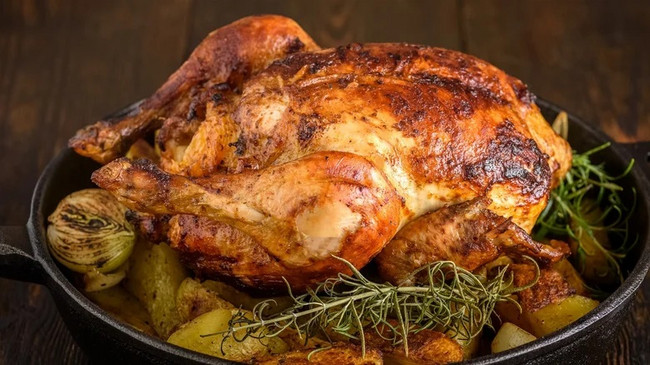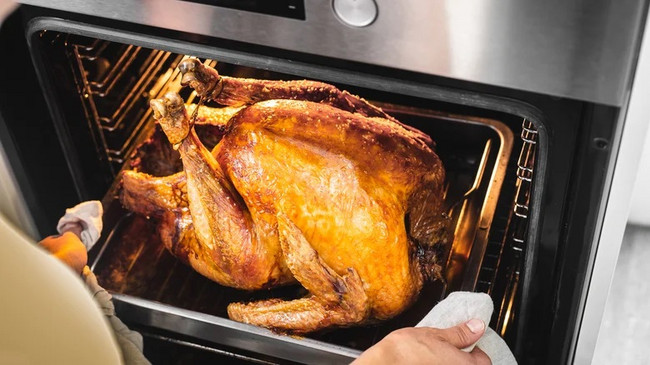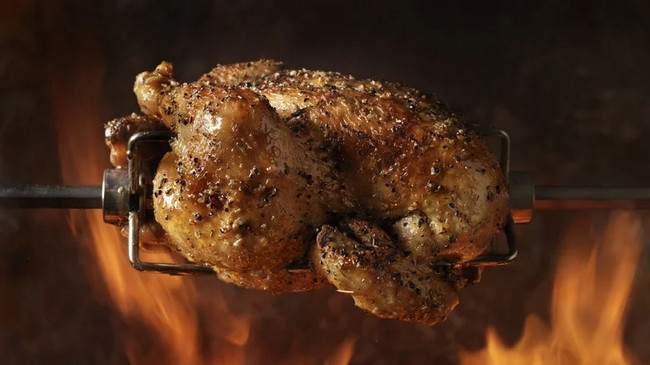✕



✕

Tag:Rotisserie Roasted Chicken Methods 2023-12-01 13:14

Rlat/Getty Images
If there's one ingredient that could give potatoes a run for their money in the versatility department, it's chicken. Simmered in savory sauce or deep fried to golden perfection, there's a seemingly infinite number of ways to prepare poultry. But when you're craving that quintessential American dinner, nothing can compare to a whole roasted chicken with all the fixings.
Golden brown and crispy on the outside yet tender and juicy on the inside, roasting a whole chicken is something of a culinary feat. While some home chefs spend months (or even years) honing their skills to perfect the ambitious dish, others would just as soon save themselves the trouble and buy a rotisserie chicken from the grocery store.
Because rotisserie cooking is a form of roasting, the terms "roasted" and "rotisserie" are often used interchangeably in the common lexicon. However, despite the fact that both dishes utilize dry heat, their preparation methods are actually a bit different: Roasted chickens are cooked in the oven at high heat, whereas rotisserie chickens are cooked on a rotating spit, allowing all parts of the bird to be heated evenly.
How roasted chicken is prepared

Alvarez/Getty Images
While there are several ways to roast chicken — including spit roasting and pot roasting— oven-roasted chicken is one of the most popular ways to prepare the bird. Oven roasting, as opposed to baking (which is often used to transform liquid ingredients into solids), is commonly used to cook foods that already have a solid structure when they enter the oven. As such, roasting requires a high temperature, often starting at around 400 degrees. The dry heat circulating inside the oven not only helps cook the chicken more evenly, but the high temperature also provides the chicken with that coveted caramelized skin.
Preparing a chicken for roasting requires patting down the skin with a paper towel to remove excess moisture, which would otherwise convert to steam in the oven and keep the skin from turning brown and crispy. Once dry, the chicken can be liberally seasoned and coated with butter or oil, which locks in moisture, preventing delicate parts of the chicken from drying out in the oven. Because a high temperature is key to oven-roasting, both the oven and roasting pan (or oven-safe skillet) should be preheated to somewhere between 400 and 450 degrees Fahrenheit before cooking. Once the bird reaches an internal temperature of 155 degrees, it should be removed and left to rest.
How rotisserie chicken is prepared

Lauripatterson/Getty Images
While rotisserie cooking falls under the blanket of roasting — which uses dry, indirect heat to cook food — it's notably different from oven roasting. Often referred to as spit roasting, the rotisserie cooking method employs the use of a skewer, otherwise known as a spit, which is speared through the chicken and rotated over a heat source to evenly cook the bird from every angle.
Historically performed over an open flame, spit roasting is considered one of the oldest methods for cooking chicken and has been well-documented since the 14th century. Today, however, rotisserie chicken is often made in a specialized rotisserie oven that features a spit and employs the use of both convection and radiant heat; the latter of these can be provided by a wood- or gas-fueled fire, or an electrically heated fixture.
Preparing a rotisserie chicken at home is difficult without an expensive rotisserie oven, so most people prefer to outsource and simply pick one up from the grocery store. While preparing the bird for spit roasting doesn't require much more than the oven-roasting method, commercially made rotisserie chickens are often injected with flavoring agents and preservatives (which is perhaps why they always seem to taste so better than the homemade version). According to Consumer Reports, however, many of these injected additives may be damaging to your health.
The Key To Cooking Up The Crispiest Salmon Every Time
Ditch The Foil And Say Goodbye To Soggy Baked Potatoes
Is Soft Serve Just Melted Ice Cream?
Pizza Hut Is Bringing A Beloved Menu Item Back, But You Better Go Fast
Taco Bell's Newest Chalupa Mashes Up 2 Discontinued Menu Items
Instantly Elevate Store-Bought Icing With A Worldwide Favorite Spread
About Us Terms of Service Privacy Policy Contact Us
Hotline(+86)17301604571
 Enterprise WeChat
Enterprise WeChat
for Client Service
 EZBuy
EZBuy
WeChat APP
Sinoexpo Digital Platform
Shanghai Sinoexpo Informa Markets International Exhibition Co., Ltd. All rights reserved
沪ICP备05034851号-77
 沪公网安备31010402000543号
沪公网安备31010402000543号